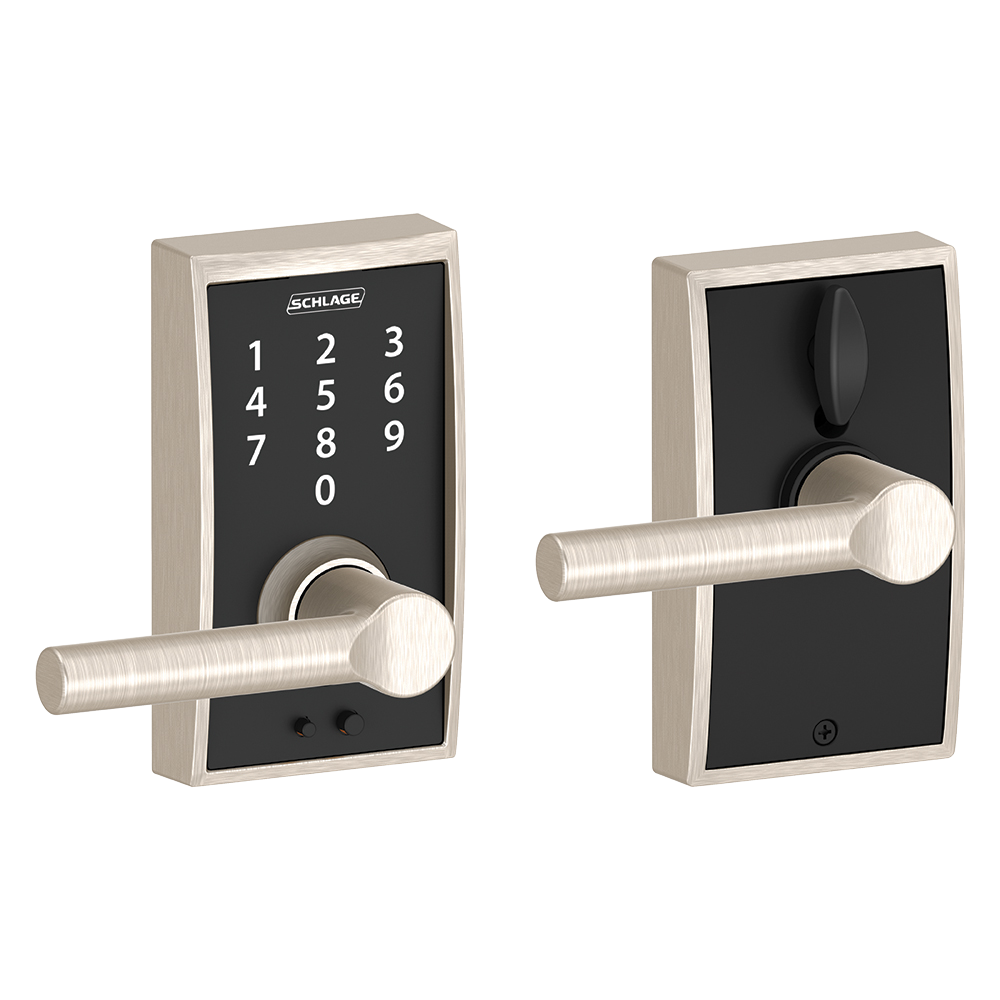.main_nav li.showSingle { /*padding-right: 50px;*/
}
.main_nav li.showSingle:first-child { /*padding-left: 62px;*/
}
/* Close Animation Start */
function resetCloseState() {
$(‘.close-img’).css(‘background-position’, ‘0px -1170px’);
}
function startAnimateClose(attrClose) {
setTimeout(function () {
var x = -1170;
(function animateBack() {
timer = setTimeout(function () {
if ((x += 45) = -1170) {
$(objClose).css({‘background-position’: ‘0px ‘ + x + ‘px’});
animateFwd();
} else {
closeContainer(objClose);
}
}, 20);
})();
}, 0);
}
function closeContainer(closebtn) {
if ($(closebtn).attr(‘id’).indexOf(‘closeDropDown’) != -1) {
$(“.mainmenu-wrap”).slideUp(“slow”);
} else if ($(closebtn).attr(‘id’).indexOf(‘closeSearch’) != -1) {
$(‘.mainmenu-wrap’).slideUp(function () {
$(‘.mainmenu-wrap’).removeClass(‘menu-search’);
});
$(“#search_div”).slideUp();
$(“#search_box”).slideUp();
$(“body”).css(“overflow-y”, “auto”);
//$(“.overlay-wrap”).hide();
$(“.modal-backdrop”).addClass(“modal-backdrop-loadmask hide”);
} else if ($(closebtn).attr(‘id’).indexOf(‘closeMsgBox’) != -1) {
$(“#tradeprofessional_form”).slideUp(“slow”);
$(“#homeowner_form”).slideUp(“slow”);
$(“body”).css(“overflow-y”, “auto”);
$(“.modal-backdrop”).addClass(“modal-backdrop-loadmask hide”);
} else {
$(‘.modal’).modal(‘hide’);
}
}
/* Close Animation End */
/* Search Box Show Hide */
function closeSearchMobile() {
$(“#search_div”).slideUp();
$(“body”).css(“overflow-y”, “auto”);
//$(“.overlay-wrap”).hide();
$(“.modal-backdrop”).addClass(“modal-backdrop-loadmask hide”);
}
function showSearchMobile() {
$(‘.mainmenu-wrap’).hide();
resetCloseState();
$(“#search_div”).slideDown();
$(“.modal-backdrop”).removeClass(“modal-backdrop-loadmask hide”);
$(“.targetDiv”).hide();
$(“body”).css(“overflow-y”, “hidden”);
$(“.overlay-wrap”).show();
setTimeout(function () {
startAnimateClose(‘closeSearchBoxMobile’)
}, 100);
}
$(document).ready(function () {
/** Code to target IE11 **/
var ua = navigator.userAgent;
if ((ua.match(/rv:11.0/i)) || (ua.match(/Edge/i))) {
$(‘body’).addClass(‘ie11-above’);
}
/** Code to target IE11 ends **/
$(‘#dl-menu’).click(function () {
$(‘#dl-menu’).dlmenu();/**For Mobile Menu**/
});
$(‘.dl-trigger’).click(function () {
$(‘.mainmenu-wrap’).hide();
closeSearchMobile();
});
$(‘#search_icon’).click(function () {
if ($(‘#search_div’).is(‘:visible’)) {
closeSearchMobile();
} else {
showSearchMobile();
}
;
});
$(‘#search_button’).click(function () {
if ($(‘#search_box’).is(‘:visible’)) {
$(‘.mainmenu-wrap’).slideUp(function () {
$(‘.mainmenu-wrap’).removeClass(‘menu-search’);
});
$(“#search_box”).slideUp();
$(“body”).css(“overflow-y”, “auto”);
//$(“.overlay-wrap”).hide();
$(“.modal-backdrop”).addClass(“modal-backdrop-loadmask hide”);
} else {
resetCloseState();
$(“.targetDiv”).hide();
$(“#search_box”).slideDown();
$(“body”).css(“overflow-y”, “hidden”);
//$(“.overlay-wrap”).show();
$(“.modal-backdrop”).removeClass(“modal-backdrop-loadmask hide”);
$(‘.mainmenu-wrap’).addClass(‘menu-search’);
$(‘.mainmenu-wrap’).show(function () {
setTimeout(function () {
startAnimateClose(‘closeSearchBox’)
}, 200);
});
}
;
});
/* $(‘#closeSearchBoxMobile’).click(function () {
$(“#search_div”).slideUp();
$(“body”).css(“overflow-y”, “auto”);
$(“.overlay-wrap”).hide();
});
$(‘#closeSearchBox’).click(function () {
$(‘.mainmenu-wrap’).slideUp(function () {
$(‘.mainmenu-wrap’).removeClass(‘menu-search’);
});
$(“#search_box”).slideUp();
$(“body”).css(“overflow-y”, “auto”);
$(“.overlay-wrap”).hide();
}); */
/** Navigation Show Hide on Click **/
/*$(‘.main_nav .showSingle’).click(function (e) {
var $this = $(this);
dataAttr = $this.find(‘a’).attr(“data-toggle”);
if ($(“.main_nav .mainmenu-wrap #” + dataAttr + “”).css(‘display’) == “none” || $(“.main_nav .mainmenu-wrap”).css(‘display’) == “none”) {
resetCloseState();
$(“#search_box”).hide();
$(“body”).css(“overflow-y”, “auto”);
//$(“.overlay-wrap”).hide();
$(“.modal-backdrop”).addClass(“modal-backdrop-loadmask hide”);
$(“.main_nav .targetDiv”).hide();
$(‘.main_nav .mainmenu-wrap’).removeClass(‘menu-search’);
$(“.main_nav .mainmenu-wrap #” + dataAttr + “”).show();
$(“.main_nav .mainmenu-wrap”).slideDown(“slow”, function () {
startAnimateClose(‘closeDropDown’);
});
}
});
$(‘.mainNavMobile .showSingle’).click(function (e) {
var $this = $(this);
dataAttr = $this.find(‘a’).attr(“data-toggle”);
if ($(“.mainNavMobile .mainmenu-wrap #” + dataAttr + “”).css(‘display’) == “none” || $(“.mainNavMobile .mainmenu-wrap”).css(‘display’) == “none”) {
resetCloseState();
$(“#search_div”).hide();
$(“body”).css(“overflow-y”, “auto”);
//$(“.overlay-wrap”).hide();
$(“.modal-backdrop”).addClass(“modal-backdrop-loadmask hide”);
$(“.mainNavMobile .targetDiv”).hide();
$(‘.mainNavMobile .mainmenu-wrap’).removeClass(‘menu-search’);
$(“.mainNavMobile .mainmenu-wrap #” + dataAttr + “”).show();
$(“.mainNavMobile .mainmenu-wrap”).slideDown(“slow”, function () {
startAnimateClose(‘closeDropDownMobile’);
});
}
});
var interval = null;
var DivHide = false;
var timeout;
function HideDiv() {
if ((DivHide == true) && (!timeout)) {
$(“.mainmenu-wrap”).slideUp(“slow”);
clearInterval(interval);
DivHide = false;
}
}
var dataAttr;
$(“.main_nav > ul”).click(function () {
timeout = setTimeout(function () {
timeout = null;
DivHide = false;
interval = setInterval(HideDiv, 1000);
$(“.mainmenu-wrap”).stop(true, true).slideDown(“slow”);
}, 500);
}, function () {
clearTimeout(timeout);
timeout = null;
DivHide = true;
});
$(“.mainmenu-wrap”).click(function () {
DivHide = false;
$(“.mainmenu-wrap #” + dataAttr + “”).stop(true, true).show();
}, function () {
DivHide = true;
});
*/
/* $(function () {
$(“.main_nav li.showSingle”).click(function () {
$(“.main_nav li.showSingle”).removeClass(“current”);
$(this).addClass(“current”);
})
$(“.dropdown-head .close-img”).click(function () {
var _this = $(this).parents(“.main_nav”).find(“.showSingle”);
var _this2 = $(this).parents(“.main_nav”).find(“.selected”);
_this.removeClass(“current”);
_this2.addClass(“current”);
})
})*/
$(“#closeMsgBox”).click(function () {
$(“#signup_success_box”).slideUp();
$(“body”).css(“overflow-y”, “auto”);
//$(“.overlay-wrap”).hide();
$(“.modal-backdrop”).addClass(“modal-backdrop-loadmask hide”);
});
$(“#closeErrorMsgBox”).click(function () {
$(“#signup_error_box”).slideUp();
$(“body”).css(“overflow-y”, “auto”);
//$(“.overlay-wrap”).hide();
$(“.modal-backdrop”).addClass(“modal-backdrop-loadmask hide”);
});
});
$(“.press-enter”).click(function () {
// Analytics tracking Code
var searchKeyword = $(this).closest(“.search-box”).find(“.search-query”);
searchKeyword = searchKeyword.val();
// Submit the form
$(“form#faqSearchForm”).submit();
});
.msg-div {
height: auto;
overflow-y: scroll;
}
.ie11-above .flag {
right: 6px;
}
.flag:after {
background-image: url(“/etc/designs/sch-us-2/clientlibs/main/images/header-link-icon.png”);
background-repeat: no-repeat;
width: 20px;
height: 100%;
position: absolute;
right: -6px;
content: “”;
top: 0px;
-ms-transform: all .2s ease-in-out;
-moz-transition: all .2s ease-in-out;
-o-transition: all .2s ease-in-out;
-webkit-transition: all .2s ease-in-out;
transition: all .2s ease-in-out;
}
.flag:hover:after {
-ms-transform: translate(3px, -3px);
-moz-transform: translate(3px, -3px);
-o-transform: translate(3px, -3px);
-webkit-transform: translate(3px, -3px);
transform: translate(3px, -3px);
}
.flag:hover {
background-position: right top;
}
.flag:active:after {
background-image: url(“/etc/designs/sch-us-2/clientlibs/main/images/header-link-icon-hover.png”);
}
.flag {
color: #003767;
font-family: “Avenir-Book”;
font-size: 11px;
line-height: 19px;
margin-left: 70px;
margin-right: 11px;
margin-top: 30px;
padding-right: 11px !important;
padding-top: 3px;
position: absolute;
right: 0;
top: 0;
}
.flag {
display: none;
}
Homes of the Century: 100 years of garage convenience.
By emily.bailey
Tuesday, June 16, 2020
.sf-date {
font-size: .85em;
color: #666;
margin-left:20px;
}
$(“#wtbClick a”).click(function(e) {
e.preventDefault();
var destination = $(this).attr(‘href’);
setTimeout(function() { window.location.href = destination; }, 1000);
});
function eventRecord(retailer)
{
//record([‘productfacets’], {facetselection: “‘”+selectedFacets+”‘”});
var prodSku = $(‘#prodsku’).val();
var pdpprodTitle = $(‘#pdpLabelTitle’).text();
var SKUProduct = prodSku + ‘-‘ + pdpprodTitle;
if(SKUProduct == “undefined-“)
{
SKUProduct = “WTB”;
}
}
Whether for actually parking your car or storing everything under the sun, garages are often a coveted feature when buying a home. So what’s their history?
READ MORE
.blog .textExt .blogg{display:none;}

.blog .textExt .blogg{display:none;}
Getting attached to our garages
A century ago, cars were just emerging as part of daily life. For the first time, we needed someplace to secure the family automobile. A Sears, Roebuck & Co. catalog, which sold blueprints to would-be homeowners so they could build their own homes, had two floorplans for detached garages in 1921. Of advertising note was their “new triple folding sliding doors” that took up little space when open with “no chance of doors blowing shut while backing in or out.”
Doors that stay open seems like an odd perk when today’s garages can be smart, letting us check from anywhere if we forgot to close our door on the way out.
.blog .textExt .blogg{display:none;}
Thirty years after the Sears, Roebuck & Co. catalog was published, attached garages were in fashion. While this was more convenient, it did raise this issue of how to keep garage fumes and dirt from getting in the house. The solution in most cases was simply tacking the addition to the end of the house where service entrances have historically been.
“Modern” 1920s houses featured separate vestibules adjoining the kitchen that would house the family’s ice box and eliminate the need for the ice peddler to let in the dirt and cold upon delivery. The same concept applied later in the century. We can see in this 1950s Practical Homes catalog an enclosed porch that provided a barrier to pollutants between the kitchen and the garage. A separate service entrance, now intended for the family’s convenience, may also have been part of that passageway or porch. Indeed, Practical Homes touted its Trenton floorplan as being “planned throughout for servantless living, with a thought to maintenance at a maximum of ease.”
As time passed, those service entrances and separate vestibules were still part of the home but had transformed into mudrooms. Their location and purpose remained the same – provide a barrier between garage grime and our clean kitchens.
.blog .textExt .blogg{display:none;}
Welcome to the man cave
Perhaps the biggest change in the history of garages is their size. One-car garages became doubles to accommodate the new trend of multi-car families. Then, when DIY became a household hobby in the 50s, we needed a place to store our tools if we didn’t have a backyard shed. We started accumulating more belongings thanks to post-World War II economic prosperity. Storage space and adjoining workshops were added to our garages, officially beginning the shift from car park to man cave.
.blog .textExt .blogg{display:none;}
.blog .textExt .blogg{display:none;}
Frank preferred a carport
Historically, however, not everyone has been a fan of the garage. Frank Lloyd Wright preferred carports because of his distaste for clutter. Garages, like basements which he also eliminated from his designs, were merely magnets for unnecessary belongings. Beginning in the 1930s, the famous architect advocated for carports for tidiness – with no walls, you can’t hide anything – as well as their functionality and the sleek lines of modern architecture.
.blog .textExt .blogg{display:none;}
.blog .textExt .blogg{display:none;}
.blog .textExt .blogg{display:none;}
1 “Large High-Traditional with Two Fireplaces.” Architectural Designs, April 1987, p. 22.
2 “Farmhouse Influence.” Architectural Designs, April 1987, p. 111.
.blog .textExt .blogg{display:none;}
body {
text-align: inherit ;
}
.commercial:after {
background-image: none;
}
div.section {
margin: 0px 0;
}
@media (min-width: 768px) and (max-width: 900px) {
.main_nav>ul li a {
font-size: 12px;
}
}
/* –INC0038827 – show main nav–10.5.2020
Css for hiding main-nav drawer
.mainmenu-wrap {
background-color: #ffffff;
border-bottom: 3px solid #ffffff;
}
.close-img {
background: none;
}
.border-bottom {
display: none;
}
.dropdown-head {
display: none;
}*/
div.list div.pagination {
margin-left: 0px;
}
.pagination {
width: 100%;
}
fieldset {
width: 445px !important;
}
@media (max-width: 767px) {
.navigation {
width: 100%;
margin-right: 0px;
}
}
<!–
Stay up-to-date on the latest style and design tips, trends, DIY tutorials, product updates and smart home news.
var aoProtocol = location.protocol;
if ( aoProtocol.indexOf(‘http’) < 0 ) aoProtocol = 'http:';
var aoCAP = {
aid: '17883',
fid: '0017',
did: 'd-ext-0001',
server: 'mktg.schlage.com',
formId: 'blog-subscribe',
protocol: aoProtocol,
};
var aoArr = aoArr || []; aoArr.push(aoCAP);
$("form#blog_subscribe").submit(function(e){
var business = $('#business').val();
var businessRegion = $('#businessRegion').val();
var businessType = $('#businessType').val();
var send_to_sb = $('#send_to_sb').val();
var email = $('#email').val();
var subscription = $('[name="subscription"]:checked').val();
console.log("sub"+subscription);
$.ajax({
type: 'POST',
url: "/bin/allecore/formsubmit",
contentType: 'application/x-www-form-urlencoded; charset=UTF-8',
//contentType: 'application/json; charset=UTF-8',
data: {
formName: "blog_subscribe",
cusBusiness: business,
cusAlleRegion: businessRegion,
cusBusinessType: businessType,
subscription: subscription,
send_to_sb:send_to_sb,
email:email
},
dataType: 'json',
success: function (msg) {
},
error: function (xhr, ajaxOptions, thrownError) {
}
});
//alert("Hurray! I'm subscribed.");
$("#msg").show();
$("form#blog-subscribe")[0].reset();
e.preventDefault();
});
.iubenda-cs-close-btn {
color: #000 !important;
position: absolute !important;
right: 10px !important;
text-decoration: none !important;
font-size: 20px !important;
}
.blueBorder
{
background: #0081c5 none repeat scroll 0 0;
width:100%;
height:10px;
}
.Avenir_Black
{
color: #000;
font-weight: bold;
text-align: center;
padding:15px 0;
}
#blog-subscribe input[type=”email”]
{
border: 1px solid #ccc;
color: #555;
margin: 0 14px 0px 0;
padding-left: 10px;
width: 250px;
}
#blog-subscribe input[type=”radio”]
{
float:left;
margin-top:0;
margin-right: 2px;
}
.blogSubsButton{
background: #0081c5 none repeat scroll 0 0;
border: 1px solid #ccc;
color: #fff;
font-family: “Avenir-Black”;
font-size: 13px;
height: 20px;
letter-spacing: 1px;
margin-bottom: 0px;
padding: 0 16px;
}
.stayLeft
{
float:left;
}
.stayLeft.radioBtn
{
padding-left:10px;
margin-top: 2px;
}
.stayLeft.submitBtn
{
padding-left:20px;
}
.subsForm
{
width:100%;
text-align: center;
}
.subsForm form#blog-subscribe
{
margin: 0 auto;
display:inline-block;
}
.subscribeBlogForm
{
border: black 1px solid;
position: fixed;
width: 100% !important;
z-index: 99999998 !important;
bottom: -1px;
}
.footer
{
overflow: hidden;
}
.whiteBg
{
background-color: #fff;
padding-bottom: 10px;
}
#msg
{
padding-left: 10px;
}
$(document).ready(function(){
if(readCookie(“BlogSubscribe”) != null)
$(“.subscribeBlogForm.blog-subs”).hide();
});
function writeCookie(cookieName,cookieValue,exdays){
if(exdays > 0)
{
var d = new Date();
d.setTime(d.getTime()+(exdays*24*60*60*1000));
var expires = “expires=” + d.toGMTString() + ‘; path=/’;
document.cookie = cookieName + ‘=’ + cookieValue + “; ” + expires;
}
else
{
document.cookie = cookieName + ‘=’ + cookieValue + “; path=/”
}
}
function readCookie(name) {
var nameEQ = name + “=”;
var ca = document.cookie.split(‘;’);
for (var i = 0; i < ca.length; i++) {
var c = ca[i];
while (c.charAt(0) == ' ') c = c.substring(1, c.length);
if (c.indexOf(nameEQ) == 0) return c.substring(nameEQ.length, c.length);
}
return null;
}
$(".iubenda-cs-close-btn").click(function(){
$(".subscribeBlogForm.blog-subs").hide();
writeCookie("BlogSubscribe", "TRUE" , 30);
});
–>













